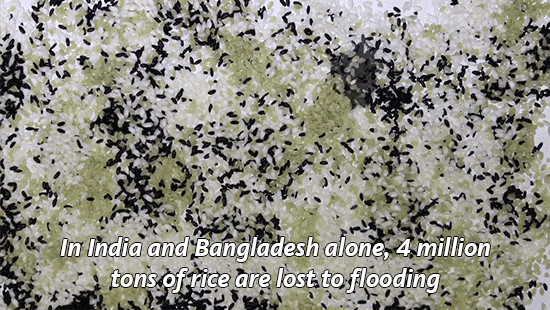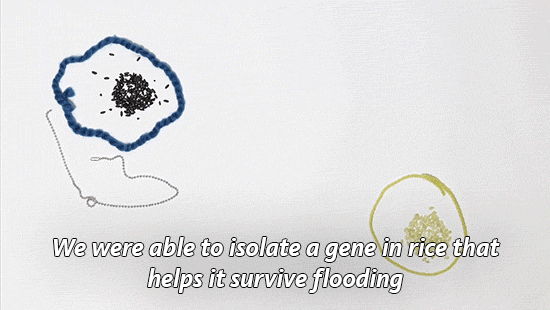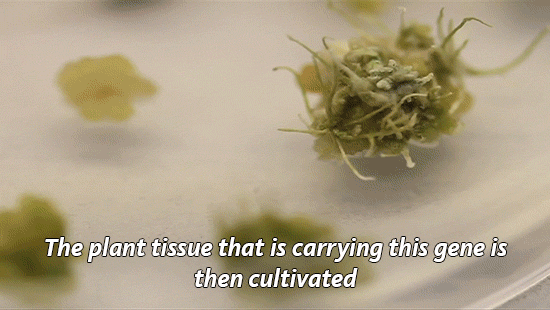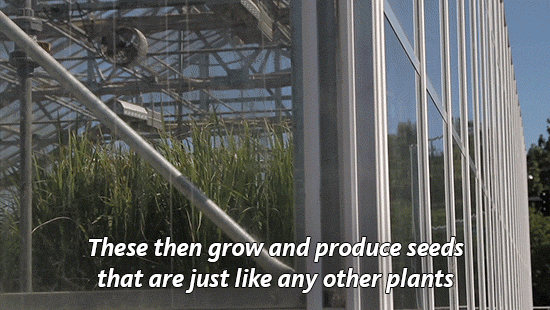Skin Gel Allows Wounds To Heal Without Leaving A Scar

Skin gel allows wounds to heal without leaving a scar
A team of researchers at Huazhong University of Science and Technology has developed a silk protein-based gel that they claim allows for skin healing without scarring. In their paper published in the journal Biomaterials Science, the group describes their gel and how well it works.
Scarring due to a skin injury is not just unsightly—for many, it can also be a painful reminder of a wound. For these reasons, scientists have sought a way to heal wounds without scarring. In this new effort, the team in China claims to have found such a solution—a sericin hydrogel.
The gel used by the researchers was based on a silk protein—the researchers extracted sericin from silk fibers and then used a UV light and a photoinitiator to cross-link the protein chains. The result was a gel that adhered well to cells and did not trigger much of an immune response. The researchers note that it also has adjustable mechanical properties. They explain that the gel allows for scar-free healing by inhibiting inflammation and by promoting the development of new blood vessels. It was also found to regulate TGF-β growth factors, which resulted in stem cells being routed to the injury site allowing new skin to develop, rather than scar tissue.
Read more.
More Posts from Redplanet44 and Others

Tumour Markers
Chemical biomarkers that can be elevated by the presence of one or more types of cancer, produced directly by the tumour or by non-tumour cells as a response to the presence of a tumour. Really great tests as can use just blood/urine, but aren’t the most specific and false positives do occur.

Alpha-fetoprotein (AFP)
Glycoprotein synthesised in yolk sac, the foetal liver, and gut - will be high in a foetus and during pregnancy.
<10 ng/mL is normal for adults
>500 ng/mL could indicate liver tumour
Normally:
Produced primarily by the liver in a developing foetus
Thought to be a foetal form of albumin
suppress lymphocyte activation and antibody production in adults (immune suppressant)
Binds bilirubin, fatty acids, hormones and metals
In cancer:
Detects hepatocarcinoma (liver cancer)
Risk factors: haemochromotosis, hep B, alcoholism - cell repair and growth from this damage leads to cancers
Present in non-pathogenic liver proliferation, including the growth and repair response to the above. This makes it hard to differentiate - AFP levels can be raised in patients with liver cancer risk factors due to the factors themselves, not a cancer. Not very diagnostic!! Used in combination with other tests/factors. Sensitivity and specificity ~75%
Other hepatocellular carcinoma markers:
γGT (γ-glutamyltransferase) - biliary damage
AFP mRNA (not always together with AFP! Might not be activated)
γGT mRNA elevated
Raised cytokines (IL-8, VEGF, TGF-B1)
ALT and AST elevated - liver disease
Carcinoembryonic antigen (CEA)
a set of highly related glycoproteins involved in cell adhesion. Potentially associated with innate immune system.
Normally:
produced in gastrointestinal tissue during foetal development
production stops before birth
present only at very low levels in the blood of healthy adults.
Cancer:
Elevated in almost all patients with colorectal cancer
Can monitor recurrence of cancer (when compared to previous test results for that patient) with a sensitivity of 80% and specificity of 70%
levels may also be raised in gastric, pancreatic, lung, breast and medullary thyroid carcinomas
also some non-neoplastic (not cancer) conditions like ulcerative colitis, liver disease, pancreatitis, COPD, Crohn’s disease, hypothyroidism - again, high risk groups for colorectal cancer - not a diagnostic test
Levels elevated in smokers.
Carbohydrate antigens (CA)
Including:
CA 19-9 - Pancreas
CA 15-3 Breast
CA 50 - Colorectal
CA 125 - ovarian
Levels rise only in disease states and particularly cancer, but will not rise in all patients.
Part 2 coming soon!

Take My Number





Rocket into sub-orbit on Blue Origin’s New Shepard! (December 15, 2017) It’s a pristine day in west Texas. The desert stretches far to the horizon out the capsule’s windows with the foothills of the Van Horn mountain range in the distance. The typical winter day is broken first by a deep rumble from below followed an instant later by clouds of smoke and a flash of flame. That’s the scene inside Blue Origin’s New Shepard crew capsule during launch as seen in new footage from this week’s test. Mannequin Skywalker - the company’s astronaut simulator - is seen rocketing to over 322,000 feet, or 61 miles, strapped in one of the cabin’s six seats.

Within seconds, the receding countryside below gives way to vast swaths of desert. The sky turns from thick and blue to pitch black in a matter of seconds as the vehicle races upwards. New Shepard would reach a maximum ascent velocity of Mach 2.94 during the flight. As the single BE-3 engine of the propulsion stage cuts out, the cabin becomes weightless as indicated by straps on the dummy’s chest. Hundreds of miles of the Earth below spread out in all directions from the cabin’s six panoramic windows. Measuring 2.4 by 3.6 feet, they’re the largest ever flown on a space vehicle. Weightless conditions and breathtaking views continue as the capsule begins its descent to Earth. It’s like the launch but in reverse; the black of space quickly fills with colour as the atmosphere is reentered. Because New Shepard is a suborbital vehicle and doesn’t boost the capsule fast enough to achieve significant atmospheric friction, there is no flaming meteor-in-the-sky or heat shield on the spacecraft. It simply falls through the sky, racing to meet the Earth below which it only just left. Back in the thicker atmosphere, three drogue parachutes help stabilize the cabin before the larger main canopies are unfurled. These help bring the capsule to a safe, soft landing at just one foot per second a few kilometers from the launch pad. According to Blue Origin’s founder and CEO, Jeff Bezos, the pinging heard inside the capsule in the video was due to one of the 12 experiments carried on board Mission 7. This was the first New Shepard flight granted a commercial launch license by the FAA, allowing them to carry commercial research payloads on the flight. Other flight milestones can also be discerned by the subtle audio and visual clues, such as MECO, stage separation, drogue cute deployment and mail parachute deployment. Read our full story on Mission 7 and the resumption of New Shepard testing by clicking here.
Check out the full video with audio by clicking here or below.
P/C: Blue Origin.
“It took many years of vomiting up all the filth I’d been taught about myself, and half-believed, before I was able to walk on the earth as though I had a right to be here.”
— James Baldwin, The Price of the Ticket (via quotespile)

Australia’s national science agency CSIRO has identified a new gene that plays a critical role in regulating the body’s immune response to infection and disease.
The discovery could lead to the development of new treatments for influenza, arthritis and even cancer.
The gene, called C6orf106 or “C6”, controls the production of proteins involved in infectious diseases, cancer and diabetes. The gene has existed for 500 million years, but its potential is only now understood.
Continue Reading.

Engineers Develop New Manufacturing Process That Spools Out Strips of Graphene
MIT engineers have developed a continuous manufacturing process that produces long strips of high-quality graphene.
The team’s results are the first demonstration of an industrial, scalable method for manufacturing high-quality graphene that is tailored for use in membranes that filter a variety of molecules, including salts, larger ions, proteins, or nanoparticles. Such membranes should be useful for desalination, biological separation, and other applications.
“For several years, researchers have thought of graphene as a potential route to ultrathin membranes,” says John Hart, associate professor of mechanical engineering and director of the Laboratory for Manufacturing and Productivity at MIT. “We believe this is the first study that has tailored the manufacturing of graphene toward membrane applications, which require the graphene to be seamless, cover the substrate fully, and be of high quality.”
Read more.
GMO does NOT mean Generally Mean Organizations.




Why we need GMOs to survive climate change
Genetically modified organisms get a bad rap for many reasons, but we’ve actually been genetically altering what we eat since the dawn of human history.
“For 10,000 years, we have altered the genetic makeup of our crops,”explains UC Davis plant pathology professor Pamela Ronald.
“Today virtually everything we eat is produced from seeds that we have genetically altered in one way or another.” (You can read more about Ronald’s thoughts on genetically engineered food here.)
Right now her focus is on rice. It’s one of our basic crops and without it, we would struggle to feed much of the world.
With climate change, we’re seeing an increase in flooding in places like India and Bangladesh, which makes it harder to grow this important food staple.
So Ronald and her lab have developed a flood-tolerant strain of rice. It’s known as Sub1a or “scuba rice” and millions of farmers in South Asia are now growing it in their fields.

Today is National Food Day, a day dedicated to hunger awareness. But as we focus on food insecurity, we need to talk more about how global warming will make the problem worse.
As our climate continues to heat up, it has huge impacts on what foods we are able to grow. Will our crops be able to survive droughts and floods? The University of California leads six labs that are working to develop other climate-resilient crops including chickpea, cowpea and millet.
Find out what other scientists are doing to improve our food.
It`s gonna be Moon Soon season in India!! @neysastudies
The last time any country put boots or, rather, little metal feet, on the Moon was in 2013, when China landed its Yutu rover there. Before that, you’d have to look back to the 1970s to find anything built by Earthlings that camped out on the surface of the Moon.
But in 2018, India says it will be ready to join the ranks of the moon lander. The Indian Space Research Organisation (ISRO) is getting ready to land its very first lunar rover by the end of March 2018, as part of its Chandrayaan-2 mission.
Continue Reading.

NASA eyes versatile carbon-nanotube technology for spaceflight applications
An ultra-dark coating comprised of nearly invisible shag rug-like strands made of pure carbon is proving to be highly versatile for all types of spaceflight applications.
In the most recent application of the carbon-nanotube coating, optical engineer John Hagopian, a contractor at NASA’s Goddard Space Flight Center in Greenbelt, Maryland, and Goddard scientist Lucy Lim are growing an array of miniscule, button-shaped bumps of multi-walled nanotubes on a silicon wafer.
The dots, which measure only 100 microns in diameter—roughly the size of a human hair—would serve as the “ammunition” source for a mini-electron probe. This type of instrument analyzes the chemical properties of rocks and soil on airless bodies, like the Moon or an asteroid.
Although the probe is still early in its technology development, it’s showing promise, said Lim, who is using funding from NASA’s Planetary Instrument Concepts for the Advancement of Solar System Observations Program, better known as PICASSO, to advance the concept.
Read more.
-
 mileysyrups liked this · 6 years ago
mileysyrups liked this · 6 years ago -
 give-me-back-my-legions liked this · 6 years ago
give-me-back-my-legions liked this · 6 years ago -
 llort reblogged this · 6 years ago
llort reblogged this · 6 years ago -
 llort liked this · 6 years ago
llort liked this · 6 years ago -
 razorbuckeye liked this · 6 years ago
razorbuckeye liked this · 6 years ago -
 rndork liked this · 6 years ago
rndork liked this · 6 years ago -
 captain-aha liked this · 6 years ago
captain-aha liked this · 6 years ago -
 xiemarae liked this · 6 years ago
xiemarae liked this · 6 years ago -
 plantasia liked this · 6 years ago
plantasia liked this · 6 years ago -
 ijustwantloveandfriendship reblogged this · 6 years ago
ijustwantloveandfriendship reblogged this · 6 years ago -
 ijustwantloveandfriendship liked this · 6 years ago
ijustwantloveandfriendship liked this · 6 years ago -
 sciencenerd4-blog liked this · 6 years ago
sciencenerd4-blog liked this · 6 years ago -
 fractal-fluctuation liked this · 6 years ago
fractal-fluctuation liked this · 6 years ago -
 master7mindd reblogged this · 6 years ago
master7mindd reblogged this · 6 years ago -
 redraidervalhalla liked this · 6 years ago
redraidervalhalla liked this · 6 years ago -
 decadentavenue76 liked this · 6 years ago
decadentavenue76 liked this · 6 years ago -
 kazoracht reblogged this · 6 years ago
kazoracht reblogged this · 6 years ago -
 kazoracht liked this · 6 years ago
kazoracht liked this · 6 years ago -
 davidjkstuff liked this · 6 years ago
davidjkstuff liked this · 6 years ago -
 rd-taph liked this · 6 years ago
rd-taph liked this · 6 years ago -
 mettahumanoid reblogged this · 6 years ago
mettahumanoid reblogged this · 6 years ago -
 mettahumanoid liked this · 6 years ago
mettahumanoid liked this · 6 years ago -
 redplanet44 reblogged this · 6 years ago
redplanet44 reblogged this · 6 years ago -
 bioniche reblogged this · 6 years ago
bioniche reblogged this · 6 years ago -
 pendragyn liked this · 6 years ago
pendragyn liked this · 6 years ago -
 king-shoutmon liked this · 6 years ago
king-shoutmon liked this · 6 years ago -
 alittleworldlywise liked this · 6 years ago
alittleworldlywise liked this · 6 years ago -
 regleh liked this · 6 years ago
regleh liked this · 6 years ago -
 azuregod reblogged this · 6 years ago
azuregod reblogged this · 6 years ago -
 jimkxjimk-blog liked this · 6 years ago
jimkxjimk-blog liked this · 6 years ago -
 jimkxjimk-blog reblogged this · 6 years ago
jimkxjimk-blog reblogged this · 6 years ago -
 congealed-dairy liked this · 6 years ago
congealed-dairy liked this · 6 years ago -
 blog-dzepxich liked this · 6 years ago
blog-dzepxich liked this · 6 years ago -
 autry-nd liked this · 6 years ago
autry-nd liked this · 6 years ago -
 materialsscienceandengineering reblogged this · 6 years ago
materialsscienceandengineering reblogged this · 6 years ago
